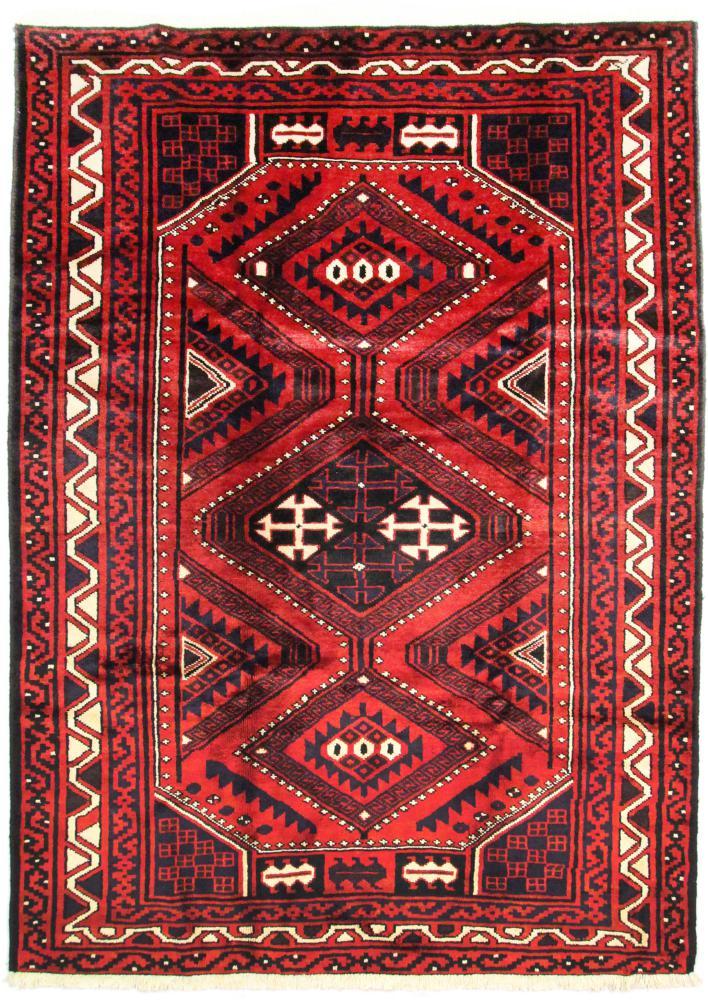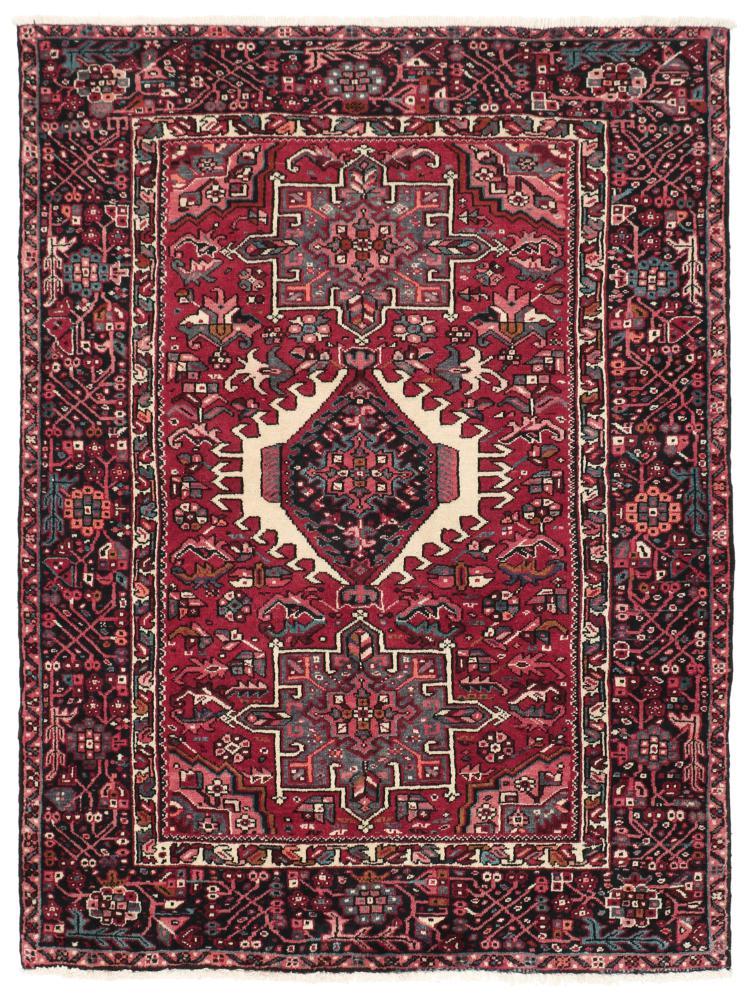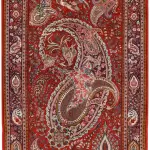Introducing the original carpet and its features
Sonqor and Koliyayi city is one of the cities of Kermanshah province, which is located in the west of Iran. If we assume the cities of Hamedan, Kermanshah and Sanandaj as the vertices of a triangle, Sonqor Koliyayi city with an area of about 2242 square kilometers is located in the center of this triangle. In this area, very high-quality and original carpets are woven, which also have very unique patterns. In this article, we will introduce beautiful carpets in general.
History of carpet weaving in Koliyayi city
In the small town of Sonqor and its surrounding villages, carpets are woven that are at least seventy years old. Cecil Edwards, the author of the book Qali Iran, who mentioned Kermanshah as the market for Kurdish wool products in the west of Iran, called Kurds mostly nomadic people and shepherds who get high-quality hybrid wool with long and wavy fibers from the sheep that graze in the mountainous areas. They find that this wool is similar to Anatolian wool and of the same quality. According to Edwards, every year in June and July, around the Qarasu River outside the city of Kermanshah, a group of women can be seen washing the wool that has been picked from the sheep.
Nomadic carpets of Kurdistan
The main area of Kurdistan nomadic carpet production is located within a circle with a radius of 50 miles, the center of which is a little to the west of the village of Qorveh. This area includes the villages of Koliyayi and the small town of Sonqor, which is the market of this industry. Another group is located in the northwest of Koliyayi and its center is called Shirin Abad. Twenty years ago, the products of Koliyayi region amounted to several thousand boards per year, but this amount is gradually decreasing. Currently, it is estimated that the production of this region is equal to the total production of other regions of Kurdistan, that this decrease in the amount of nomadic production is due to two reasons, one is the disintegration of the life of the people that was the result of settlement, and the other is the increase in the price of wool, the second reason is more decisive. It is, because the tribes and nomads weave carpets in order to make the most of the extra wool they have and make a profit, while this motivation no longer exists because they can sell their entire wool product at once and at a reasonable price. to sell But the danger is that if one day the situation reverses and selling wool is not possible this easily, the profession of carpet weaving will be forgotten in most of these areas. The villages of Shirin Abad, which are second in importance; It has rugs that are somewhat similar to Bijar products. The products of other nomads and Kurdish clans, such as Harki, Sinjabi, Gurani, Jafi, and Kalhor, are not significant, and a few Sinjabi and Jafi carpets (with beautiful blue colors) can be seen in the market, but their products are certainly not more than one tenth of the 1930-1935. And the reason for that is the settlement of nomads and the increase in the price of wool.
Sonqor carpet is a kind of Kurdish carpet
Sonqor carpets are the type of carpets that can be considered Kurdish or at least under the influence of Kurdish culture, and it may not be an exaggeration to call the carpets of Kurdish areas, perhaps because of the life of Kurds who are constantly in contact with beautiful and eye-catching nature, proud mountains and green pastures. We call it one of the most beautiful carpets in Iran. This pure natural quality can be seen mainly in the existence of self-woven and mental motifs that differ from region to region and village to village, and as we will see in the future, we hope that this pure and distinguished quality, which is one of the advantages of Iranian carpets, will always be stay stable
Special motifs of the Sonqor and Koliyayi carpets
The motifs used for weaving in Sonqor and Koliyayi have mostly been instinctive and innate (apart from the fact that this time is woven by organized trainings and based on well-known and famous maps) and weavers sometimes use tools and objects and What was around his life created designs and motifs that easily had an important place in the field of traditional thought and culture and their old carpets, which can be found in interesting motifs such as fan, telephone, cow hoof, comb, two-flowered ship, revolver, etc. He pointed out that the result of these motifs were beautiful and interesting carpets. This issue has been visible in the historical and ancient stories and myths of the region. The map of Persepolis, tree, stone lion, Lili and Majnoon, hunting ground, Taq Bostan, Hozei, etc., is the result of the imaginative mind of the tasteful weavers of this area, rather than having a documented and historical form. This issue is not only considered a defect of the carpet, but it is related to the concept of creativity and cultural ability, which affects the flexibility and extent of carpet weaving.
General carpet features
The general carpet is mainly divided into two groups:
1- Rural handwoven carpets
2- Urban handwoven carpets
General village carpet
In the following, we will discuss the technical characteristics of the general rural carpet
Raw material
The rural handwoven carpets of this region are all wool, in such a way that the warp and weft are wool, cotton warp and wool weft or vice versa, and the wool used is often self-dyed.
Dimensions
The most common dimensions in rural carpets include: back, half and half, carpet, vault, curtain, side, middle (150 x 300), rug, and carpet in dimensions of 1 x 1.5 meters and even dimensions larger than 12 Square meters.
Rajshmar
The index of rural rugs is generally between 15 and 40.
Node type
Rural carpets of this area are woven with Turkish knot (symmetrical 9) like many other Kurdish carpets.
Type of weaving
The rural carpets of this area are mostly single-weave type. But in some cases, the use of double weft and loop weaving is also seen.
Color
The fibers used in the weaving of rural carpets in this region are all dyed using natural materials. Also, the natural color of wool fibers (self-dyed wool) is also used in the texture.
Plan and map
The motifs of this area are mostly geometric and broken and are often woven mentally.
Shirazeh
Shirazeh, the woven rural carpets of this region are round, simple and connected.

General urban carpets
In the following, we will discuss the technical characteristics of the general urban carpet
Raw material
The warp and weft of handwoven urban carpets are made of cotton and the pile is made of wool (Kermanshahi wool).
Dimensions
The most common dimensions of urban carpets in this region include: back, half and half, carpet, side, curtain, arch and rug.
Rajshmar
The index of urban woven carpets is usually between 20 and 40.
Node type
Symmetrical or Turkish knot is a common knot in the weaving of general urban carpets.
Texture type
The urban carpets of this area are of the type of loop weave and double weft.
Color
Koliyayi city carpets are dyed using dyed fibers with vegetable and chemical dyes. Commonly used colors include camel, lacquer, navy, green, blue, yellow, brown, orange, bright red, black, blonde, and cream.
Patterns and Designs
Urban carpet motifs of this area are of the rotating type and include bush, fish, tree, afshan, lakh and tanraj motifs. Also, the designs of Mahi Bijar, Juzan Melair and Sarouq Kerman are also woven in this area.
Shirazeh
The rugs in this area are connected and simple.
"Takht Jamshid" pattern in the Sonqor carpet
Sonqor Kurdish tribes live in northwestern Iran and 90 kilometers north of Hamadan. Newer Sonqor carpets have cotton threads and wefts that are woven in a single weft style. The old Sonqor carpets also had a wool structure and bright and shiny colors. Koliyayiis are considered to be one of the important originators of Kurdish carpets. Among the common designs used by them, we can mention "Takht Jamshid" pattern.
High-quality wool fibers of the general carpet
The wool used in Kermanshah province is from the squirrel breed and the squirrel sheep is from the sheep breed whose body is covered with long and relatively thick wool. This type of sheep has wool that is useful in carpet art and industry, and that is why they are called sheep with special wool for carpets. The fineness of wool fibers is between 35 and 50 microns and its length is up to 380 mm.
Design and pattern of general carpet
Koliyayi carpet has been one of the most diverse Ili and nomadic weaves of Iran, and according to local customs, in the past, maps were named after the villages that mostly weaved that map or whose carpets were more famous for that map. The Koliyayi carpet is as varied and colorful as all the villages where carpet weaving is common. Due to a long history in carpet production, the general carpet includes a set of special motifs. However, it is not possible to ensure with certainty that all motifs are indigenous. The common motifs in the carpet of the region include two parts: non-native and migrant motifs and native motifs. Based on the studies that have been carried out on folk motifs and motifs in the handicrafts of different regions of Iran, it can be said that all the native handlooms of different regions of Iran, especially rural weavings and Nomads have geometric maps and abstract paintings, and the weavers of Kermanshah province, like other weavers of other regions of Iran, have used many symbolic roles in their handwovens in a special way.
Original and local motifs of Sonqor and Koliyayi carpets
The common designs in Sonqor and Koliyayi cities have a remarkable diversity, such as Bazobandi, two flowers of Akbar Abad, single flower of the line, single flower of cucumbers, single flower of Shah Wais Abad, Hossein Abad, Nakhudi, Sikh Kebab, Sayed Abdullahi, Dar Gol, Bijar fish, Bee fish. , balloon, cow head, samouri, lanjab bergamot, water barik bergamot, Kiyeh Nan servi, Fatemeh Khanomi servi, Jozan Malayer, single flower of Tabr Zini, single flower of Hossein Abad, two flowers of Haft-Tiri, red flower of Bijar, flower and bulbul of Qom, four seasons Imaginatively, the four seasons of Qom, Bakhtiari Basin, Bijar Guldani, Jozan Jungle, Mounted Hunting Grounds, Mounted Mounted Hunting Grounds, Mounted and Mounted Mounted Hunting Grounds, Lili and Majnoon, Shah Perak or Beedi Leaves, Lakh and Tarnej and Bandi are. The mentioned items are a wide collection of native and non-native motifs of this region, which of course, with the urbanization and systematization of carpet production in the region, the native motifs have gradually lost color and the reason for this is on the one hand, the nature of the rural style of weaving in the Sonqor and Koliyayi regions and from The other side can be found in urbanization and generational changes.
Final word
Sonqor and Koliyayi handwoven carpets are a kind of original Kurdish carpets that have a unique quality and beauty. Perhaps the carpets of this area are less known in the market, but it must be said that if you are looking for an original carpet in design and pattern and quality in raw materials and texture, you can choose Sonqor and Koliyayi carpets.
You can inquire about Buying Handwoven Carpets , Buying Handwoven Kilim and Mats , and Buying Handwoven Pictorial Rug Tableaus online from the Hoveida Carpet Store and register all your orders and Wherever you are in the world, deliver it to the desired address in less than 4 working days.
If you are interested in reading other articles in the field of Handwoven carpets or Handwoven Pictorial Rug Tableaus , please refer to Hoveida Carpet Commercial
Leave a comment
Your email address will not be published. Required fields are marked *












